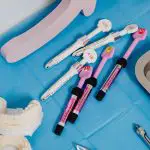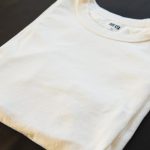Are you ready to master the art of cutting fabric for shoulder surgery? Understanding the intricacies of fabric cutting for post-surgery garments is crucial for ensuring comfort and ease of movement during recovery.
By following these expert techniques, you'll be able to create clothing that accommodates your specific needs with finesse. From selecting the right fabric to adapting clothing patterns, this guide will equip you with the skills needed to cut fabric with precision and efficiency.
Let's dive into the essential steps for achieving tailored and comfortable garments for shoulder surgery recovery.
Key Takeaways
- Use sharp fabric scissors designated for cutting fabric.
- Invest in quality tools like rotary cutters and cutting mats.
- Hold fabric scissors correctly for better control.
- Use proper cutting techniques to prevent fraying and uneven edges.
Selecting the Right Fabric
When choosing a fabric for your shoulder surgery, it's crucial to select one that offers flexibility and breathability. Fabric types such as cotton, jersey, or spandex are excellent choices as they provide the necessary stretch for comfort and ease of movement.
Consider fabric weight; lighter fabrics like chiffon or organza are delicate and may not provide the durability needed, while heavier fabrics such as denim or twill offer more support. Texture also plays a role – smooth fabrics like satin or silk may be gentler on the skin, while rougher textures could cause irritation.
Opt for a fabric color and pattern that you find soothing, as it can positively impact your mood during recovery. Additionally, prioritize breathability to reduce the risk of irritation or discomfort.
When considering fabric care, choose one that's easy to launder and maintain. The drape of the fabric is important for a comfortable fit, ensuring it doesn't restrict movement.
Lastly, factor in the cost, as you want a fabric that meets all your needs while staying within your budget.
Taking Accurate Measurements
To ensure a precise fit for the fabric used in shoulder surgery, you need to take accurate measurements.
Start by measuring the width of the shoulder and the length of the arm.
These measurements will form the foundation for creating a tailored and comfortable fabric support for the shoulder surgery.
Shoulder Width Measurement
Once you have secured the patient's arm in a relaxed position, carefully measure the width of the shoulders using a flexible tape measure.
When considering shoulder width adjustment for fabric choices, it's crucial to take accurate measurements. Ensure the tape measure rests comfortably across the back, at the widest point of the shoulders. Double-check that the patient's posture is natural to avoid skewing the measurement.
Shoulder width considerations are essential for fabric suitability. Take into account the patient's natural shoulder slope and any asymmetry. This will aid in selecting the appropriate fabric and ensuring a proper fit post-surgery.
Paying attention to these details will result in fabric pieces that match the patient's body contours and promote optimal recovery.
Arm Length Measurement
Measure the patient's arm length by holding the flexible tape measure along the outside of the arm, ensuring it follows the natural curve of the limb. Start at the prominent bone on the shoulder, then extend the tape down to the wrist bone.
This measurement is crucial for clothing adaptations and accurate armhole placement in garments post-surgery. To achieve the most precise measurement, ensure the patient's arm is relaxed and hanging naturally by their side. Avoid pulling the tape too tightly or allowing it to droop, as this can lead to inaccuracies.
Take note of the measurement and reconfirm it to ensure accuracy, as it will be instrumental in creating clothing that fits comfortably and accommodates any changes in arm movement due to the surgery.
Understanding Shoulder Movement
To ensure a successful fabric cut for shoulder surgery, it's imperative to understand the mechanics of the shoulder joint, its range of motion, and the specific muscles involved in movement. By grasping these key points, you'll be better equipped to tailor the fabric to meet the unique needs of the patient's shoulder during the surgical procedure.
Understanding shoulder movement will help you make precise and effective fabric cuts that accommodate the complexities of the shoulder joint.
Shoulder Joint Mechanics
You can understand shoulder movement by learning about the mechanics of the shoulder joint.
The shoulder joint is a ball-and-socket joint, allowing for a wide range of motion, including flexion, extension, abduction, adduction, and rotation. The head of the humerus fits into the glenoid fossa of the scapula, forming the ball-and-socket structure.
Ligaments, tendons, and muscles work together to stabilize and move the joint. Understanding the mechanics of the shoulder joint is crucial for designing effective rehabilitation exercises to improve shoulder mobility and strength.
Rehabilitation exercises often focus on enhancing the stability of the joint, strengthening the surrounding muscles, and improving the overall functionality of the shoulder.
Range of Motion
To assess your range of motion in the shoulder, a physical therapist will guide you through specific movements and positions to evaluate the flexibility and strength of the joint.
Understanding your shoulder's range of motion is crucial for setting realistic goals for recovery.
Improving mobility in your shoulder involves a combination of stretching and strengthening exercises. Your physical therapist will design a tailored program to gradually increase the flexibility of your shoulder joint.
Strengthening exercises play a vital role in stabilizing the shoulder and enhancing its ability to move effectively.
It's important to follow the prescribed exercises carefully to avoid overexertion and ensure steady progress.
Muscles Involved in Movement
Understanding the muscles involved in shoulder movement is essential for improving your range of motion and regaining functional use of your shoulder.
The shoulder joint is supported and moved by a group of muscles, including the rotator cuff muscles (supraspinatus, infraspinatus, teres minor, and subscapularis), deltoid, and the muscles of the scapula. Each muscle plays a crucial role in stabilizing and moving the shoulder joint.
The rotator cuff muscles, for example, are responsible for providing stability and controlling the fine movements of the shoulder. The deltoid muscle, on the other hand, is involved in lifting the arm away from the body.
Understanding the function of these muscles can help you perform targeted rehabilitation exercises to strengthen and improve the mobility of your shoulder, facilitating a smoother recovery process.
Adapting Clothing Patterns
When adapting clothing patterns for shoulder surgery, it's important to consider using adjustable closures for ease of dressing and comfort. Adapting styles to incorporate front closures like Velcro, snaps, or magnetic closures can help avoid the need to raise the arms during dressing. Look for patterns specifically designed for post-surgery wear, as they often feature these adjustable closures.
Additionally, consider modifying patterns to include larger armholes and looser sleeves to accommodate bandages or slings. When selecting fabric types, prioritize soft and breathable materials to minimize irritation and allow for airflow to the skin. Fabrics like cotton jersey or bamboo knit can provide the necessary comfort and flexibility needed during recovery.
When adapting clothing patterns, remember to take into account any limitations in shoulder movement and avoid designs that require reaching or lifting the arms. By carefully considering adjustable closures and fabric types, you can ensure that the clothing patterns are suitable for post-shoulder surgery wear, providing both functionality and comfort.
Designing Post-Surgery Garments
Consider incorporating adjustable closures and soft, breathable fabrics when designing post-surgery garments to ensure comfort and ease of wear. Post-surgery fashion requires thoughtful clothing modifications to accommodate medical devices, restricted mobility, and comfort.
When designing these garments, prioritize adjustable closures such as Velcro or snaps to allow for easy dressing and accommodate post-operative swelling. Additionally, opt for soft fabrics like cotton or modal that are gentle on sensitive skin and provide breathability to prevent irritation or overheating. It's essential to consider the placement of seams and tags to avoid friction with surgical areas.
Designing post-surgery garments also involves creating stylish options that promote confidence and self-expression while meeting the practical needs of the wearer. By integrating these elements, you can ensure that the post-surgery fashion pieces you create not only aid in the healing process but also contribute to the individual's overall well-being and comfort during recovery.
Cutting Fabric With Ease
To ensure precision and ease, use a sharp pair of fabric scissors to cut the fabric for your shoulder surgery garment. Fabric cutting efficiency is crucial for achieving accurate and clean cuts. Ensure that your fabric scissors are specifically designated for cutting fabric to maintain their sharpness. Invest in quality tools such as rotary cutters and cutting mats for added convenience and precision. When using fabric scissors, hold them correctly by placing your thumb in the smaller loop and your middle and index fingers in the larger loop for better control.
Mastering fabric cutting techniques is essential for achieving professional results. Prioritize the use of proper cutting techniques, such as using long, smooth cuts, to prevent fraying and uneven edges. When cutting patterns, secure the fabric in place with pattern weights or pins to prevent shifting. Additionally, consider using tailor's chalk or washable fabric markers to mark the fabric accurately before cutting.
These tips will enhance your fabric cutting experience, making the process more efficient and enjoyable.
Seam Finishing Techniques
Ensure precise and professional results in your shoulder surgery garment by incorporating effective seam finishing techniques. Stitch types and finishing techniques play a crucial role in ensuring the durability and aesthetic appeal of the garment.
When finishing seams, consider using methods such as zigzag stitching, overlock stitching, or French seams, depending on the fabric type and desired outcome. Zigzag stitching is suitable for preventing fraying in woven fabrics, while overlock stitching provides a neat and secure finish for stretchy or knit fabrics. French seams are ideal for lightweight fabrics as they encase raw edges for a clean and polished look.
Prioritize fabric preparation and cutting methods that complement your chosen finishing technique. Straight and clean edges are essential for achieving professional-looking seams, so take care when cutting the fabric to ensure accuracy.
Tips for Comfort and Accessibility
When selecting fabric for your shoulder surgery garment, prioritize materials that offer comfort and accessibility to accommodate your specific needs during recovery. Comfortable clothing plays a crucial role in your post-surgery fashion, as it can help minimize discomfort and make it easier to manage daily tasks.
Look for soft, breathable fabrics that won't irritate your skin or put pressure on your shoulder. Fabrics with a slight stretch, like jersey or knit blends, can provide flexibility and ease of movement, allowing you to dress and undress with minimal effort.
Additionally, consider garments with front closures or large armholes to simplify the dressing process while maintaining your comfort. Opt for loose-fitting designs to prevent any unnecessary strain on your shoulder.
Prioritizing comfort and accessibility in your clothing choices can contribute to a smoother recovery process and help you feel more at ease during this challenging time.
Frequently Asked Questions
What Are the Best Types of Fabric for Post-Surgery Garments That Are Both Comfortable and Easy to Care For?
For post-surgery garments, choose soft, breathable fabrics like cotton or modal for a comfortable fit and easy movement. These fabrics are machine washable and durable, but always follow care instructions to maintain their quality.
Are There Specific Measurements or Adjustments That Need to Be Made for Garments That Will Accommodate a Shoulder Brace or Sling?
When adjusting patterns for garments to accommodate a shoulder sling, consider the necessary ease for shoulder mobility. Choose soft, breathable fabrics that won't irritate the skin. Ensure the garment provides ample room for the sling without compromising comfort.
How Can I Ensure That My Post-Surgery Garments Will Not Restrict or Impede Shoulder Movement During the Healing Process?
To ensure your post-surgery garments don't restrict shoulder movement, focus on flexibility. Incorporate range of motion exercises for shoulder mobility in your physical therapy routine. Look for clothing with stretchy fabrics and adjustable closures for comfort and ease.
Are There Specific Alterations or Modifications That Need to Be Made to Clothing Patterns for Post-Surgery Garments to Ensure a Proper Fit?
When modifying patterns for post-surgery garments, ensure proper fit by considering fabric choices, comfort, and care. Make adjustments to accommodate limited shoulder movement and provide ease of wear during the healing process.
What Are Some Tips for Cutting Fabric in a Way That Minimizes Strain on the Shoulder and Promotes Ease of Movement During the Sewing Process?
When cutting fabric, consider the type and weight of the fabric as well as your comfort and ease of movement. Take accurate measurements and use sharp, ergonomic tools to minimize strain on your shoulder.







